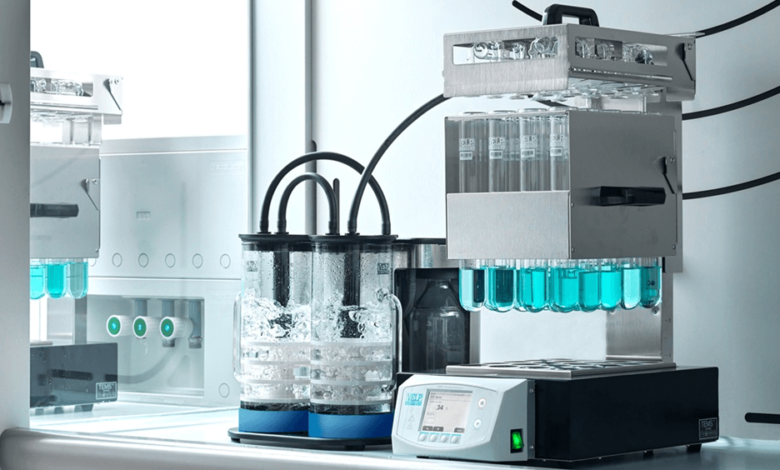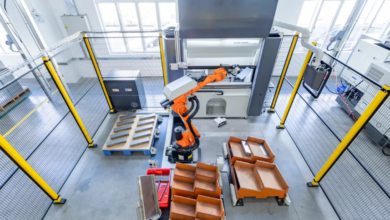Unlocking Laboratory Efficiency with the Automatic Kjeldahl Nitrogen Analyzer

Precision and efficiency are the lifelines of modern analytical laboratories. In an era where testing accuracy directly affects consumer safety, product quality, and regulatory compliance, the right instrumentation is essential. Among these tools, the automatic kjeldahl nitrogen analyzer plays a central role in determining nitrogen and protein content with unmatched consistency and automation.
This article explores how the automatic kjeldahl nitrogen analyzer is transforming laboratory workflows across food safety, agriculture, environmental science, and pharmaceuticals. It covers how it works, its key advantages, industry-specific applications, and what makes it a preferred choice over traditional nitrogen analysis methods.
What is an Automatic Kjeldahl Nitrogen Analyzer?
An automatic kjeldahl nitrogen analyzer is a laboratory device that automates the three fundamental steps of the traditional Kjeldahl method—digestion, distillation, and titration—to determine nitrogen content in a wide variety of samples. The nitrogen percentage is often used as a proxy to estimate protein content, especially in food and agricultural products.
The automation offered by this analyzer reduces manual handling, minimizes the potential for human error, and speeds up the testing process. In addition to improving safety, modern systems come with user-friendly interfaces, real-time data monitoring, and compliance-friendly documentation tools.
See also: The Future of Dentistry: How Technology Is Making Dental Care More Affordable
Working Principle of the Automatic Kjeldahl Nitrogen Analyzer
The Kjeldahl method, first introduced in 1883 by Johan Kjeldahl, has remained the reference standard for nitrogen determination. The automatic kjeldahl nitrogen analyzer refines this process using integrated systems that handle the following steps:
1. Digestion
The sample is treated with concentrated sulfuric acid and a catalyst (typically selenium or copper-based) to convert organic nitrogen into ammonium sulfate. Automated heating units and timed digestion programs reduce labor and ensure consistency.
2. Distillation
Once digestion is complete, the system adds sodium hydroxide to the mixture, releasing ammonia gas. The ammonia is distilled and captured into a boric acid solution.
3. Titration
The trapped ammonia is titrated with a standardized acid, and the system automatically calculates the nitrogen content based on the titrant volume consumed.
All steps are coordinated via a built-in control panel or software, making the entire process seamless, reproducible, and efficient.
Key Advantages of Using an Automatic Kjeldahl Nitrogen Analyzer
The leap from manual to automated Kjeldahl analysis brings several benefits that are critical for busy labs operating under tight timelines and quality standards.
✅ Time-Saving Efficiency
Automated systems can process multiple samples simultaneously or in quick succession. Some high-end models allow full batch analysis with sample auto-loaders, enabling round-the-clock operation.
✅ Enhanced Accuracy and Repeatability
Automation minimizes operator error and ensures consistent reagent volumes, heating times, and titration procedures.
✅ Improved Safety
Chemical digestion involves handling hot acids and potentially harmful vapors. Automatic units include built-in safety features such as fume scrubbers, sealed digestion blocks, and overheat protection.
✅ Regulatory Compliance
Whether it’s AOAC, ISO, or EPA standards, most automatic kjeldahl nitrogen analyzer systems are built to align with international testing requirements, making them ideal for labs that need audit-ready documentation.
✅ Digital Integration
Modern models include touchscreen interfaces, digital data logging, and compatibility with Laboratory Information Management Systems (LIMS), aiding traceability and reporting.
Applications Across Industries
Thanks to its versatility, the automatic kjeldahl nitrogen analyzer is used in a wide variety of industries where accurate nitrogen analysis is essential.
🍞 Food and Beverage Industry
- Protein Analysis: Critical for nutrition labeling and quality control of dairy, meat, cereals, and beverages.
- Ingredient Validation: Ensures that raw materials and processed foods meet declared protein specifications.
- Research and Product Development: Helps R&D teams evaluate the nutritional impact of new ingredients.
🌾 Agriculture and Fertilizer
- Fertilizer Composition Testing: Nitrogen percentage determines the quality and effectiveness of fertilizers.
- Soil Nutrient Monitoring: Identifies nitrogen levels in soil for optimal crop production.
💊 Pharmaceuticals and Chemicals
- Active Ingredient Testing: Verifies nitrogen-based compounds in complex formulations.
- Batch Consistency: Monitors variations during drug production for regulatory compliance.
🌿 Environmental Science
- Water Quality Testing: Measures total nitrogen in lakes, rivers, and wastewater.
- Emission Analysis: Tracks nitrogen emissions from industrial or agricultural sources.
Key Features to Look For
When selecting an automatic kjeldahl nitrogen analyzer, it’s crucial to evaluate your lab’s specific needs and match them with the features offered by the equipment. Consider the following:
🔹 Sample Throughput
Choose a model based on the volume of samples you process daily. High-throughput labs benefit from multi-position digesters and sample carousels.
🔹 Automation Level
Some systems automate only the distillation and titration steps, while others include digestion as well. Fully automated units offer maximum convenience.
🔹 Safety Enhancements
Look for features like acid-resistant construction, closed-loop systems, emergency shutdown mechanisms, and chemical spill prevention.
🔹 Maintenance and Support
Reliable supplier support, availability of consumables, and training resources are vital for long-term success.
🔹 Software Compatibility
Ensure that the analyzer’s software is easy to use, stores historical data, and can integrate with existing data management systems.
Maintenance Best Practices
Regular maintenance ensures optimal performance and prolongs the lifespan of your automatic kjeldahl nitrogen analyzer.
- Clean Components After Each Run: Prevent acid residue and blockages in tubes and distillation units.
- Replace Reagents Timely: Use high-purity acids and bases to avoid interference in readings.
- Calibrate Regularly: Use certified reference materials to ensure accurate titration and nitrogen measurement.
- Check Seals and Fume Scrubbers: Replace worn-out seals and filters to maintain safety and efficiency.
- Update Firmware and Software: Always keep your system’s software up-to-date for bug fixes and new features.
Comparing Traditional vs. Automatic Systems
| Feature | Traditional Kjeldahl | Automatic Kjeldahl Nitrogen Analyzer |
| Labor Requirement | High | Low |
| Speed | Slow | Fast |
| Reproducibility | Moderate | High |
| Safety | Manual handling risks | Sealed and protected systems |
| Data Output | Manual logbook | Digital, integrated with LIMS |
| Cost (initial) | Low | Higher upfront cost |
| Cost (long-term) | Higher (labor) | Cost-effective over time |
Leading Manufacturers of Automatic Kjeldahl Analyzers
The demand for efficient nitrogen testing has led to a competitive market of reliable manufacturers offering robust solutions. Leading brands include:
- VELP Scientifica – Offers compact and fully automated models suitable for food and environmental testing.
- Buchi – Known for modular systems with excellent safety features and smart software integration.
- FOSS – Delivers high-performance solutions tailored for large-scale industrial applications.
- Drawell – A rising brand offering cost-effective, reliable automatic kjeldahl nitrogen analyzer models for both research and industrial settings.
Final Thoughts
The automatic kjeldahl nitrogen analyzer is revolutionizing how labs approach nitrogen and protein analysis. By automating a traditionally manual process, these systems offer time savings, increased safety, enhanced accuracy, and robust compliance with global standards.
Whether you’re a lab technician in a food processing facility or a researcher in an agricultural R&D center, investing in this technology ensures consistent and trusted analytical results. As industries continue to demand faster turnaround times and greater precision, the automatic kjeldahl nitrogen analyzer will remain at the forefront of laboratory innovation




